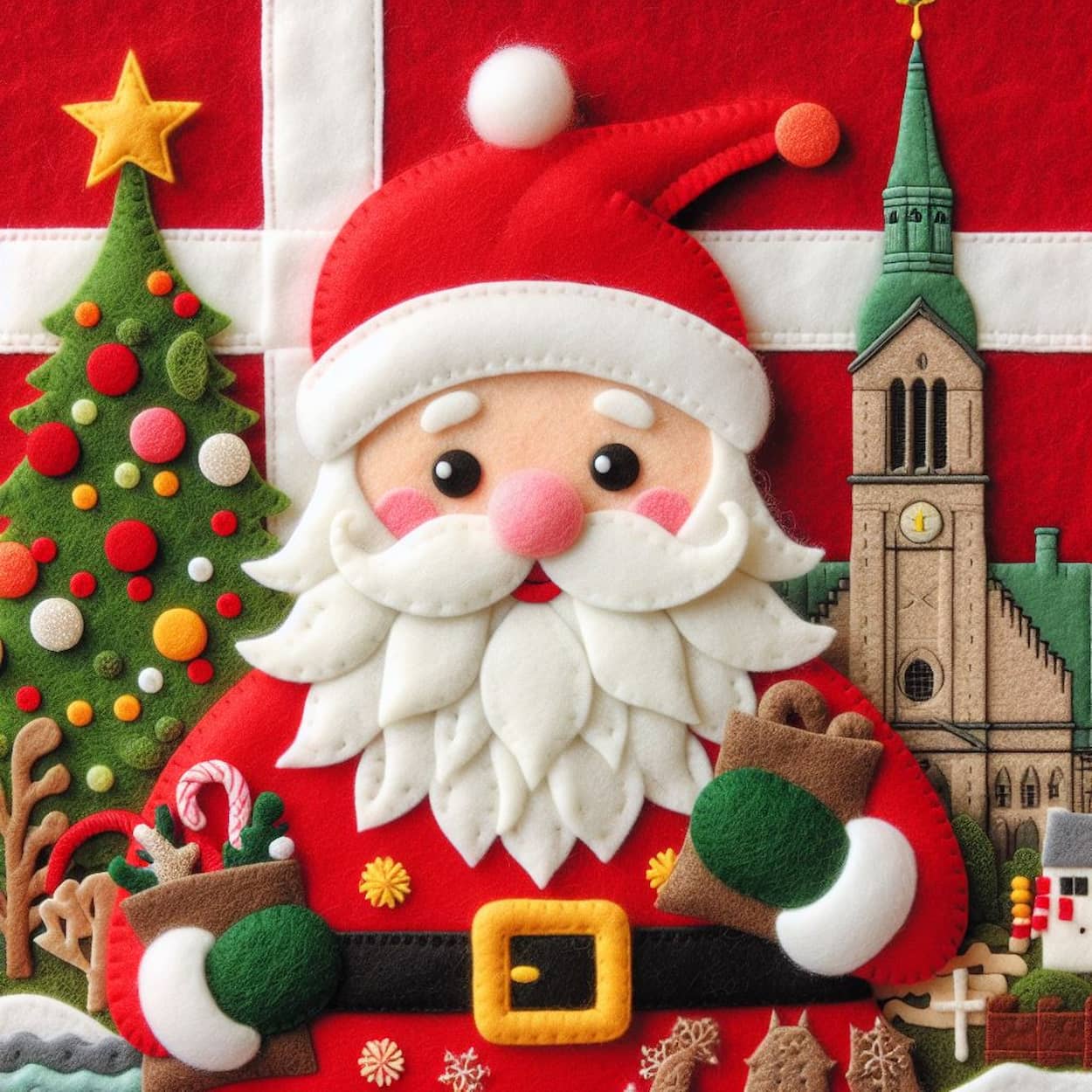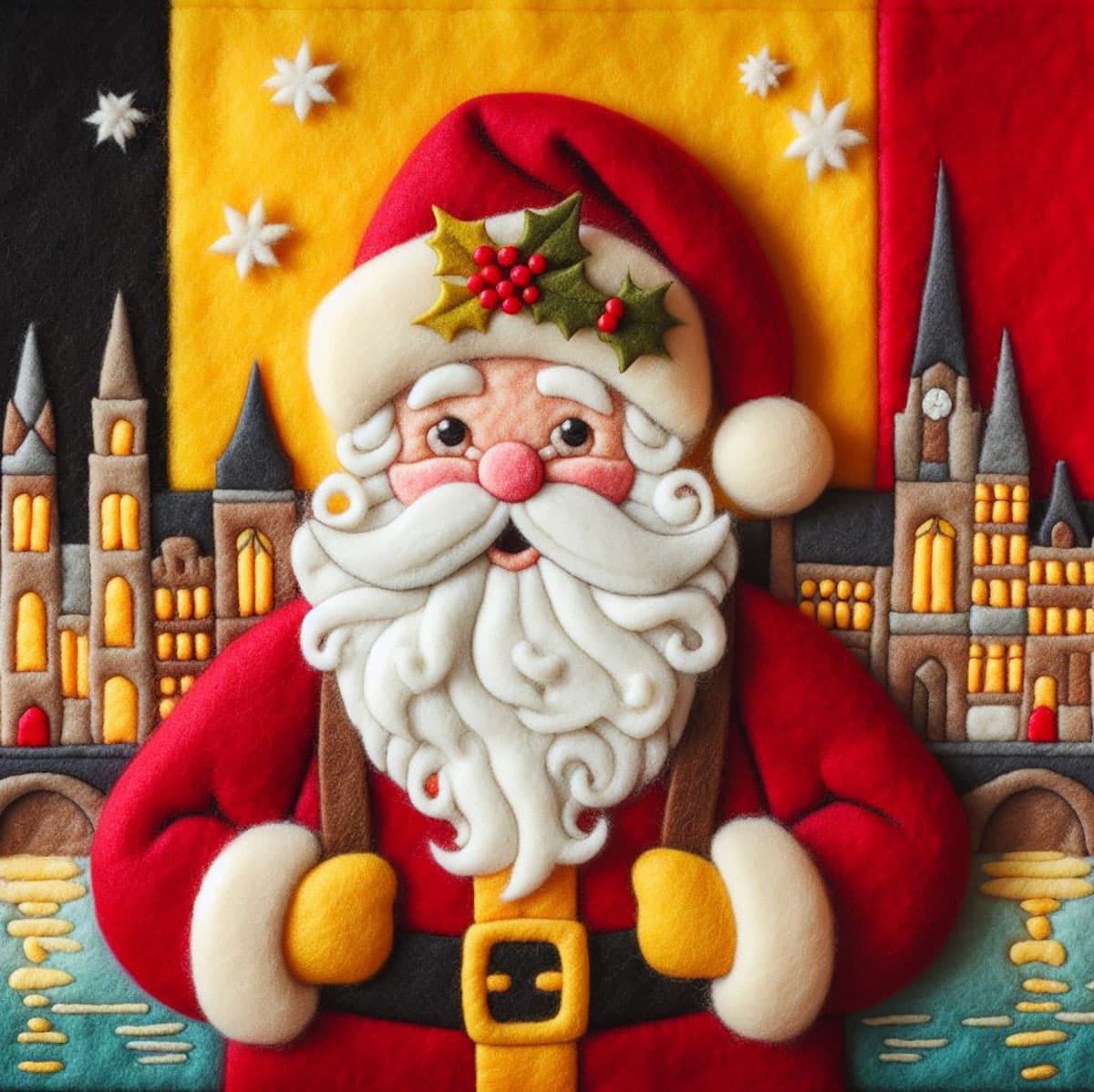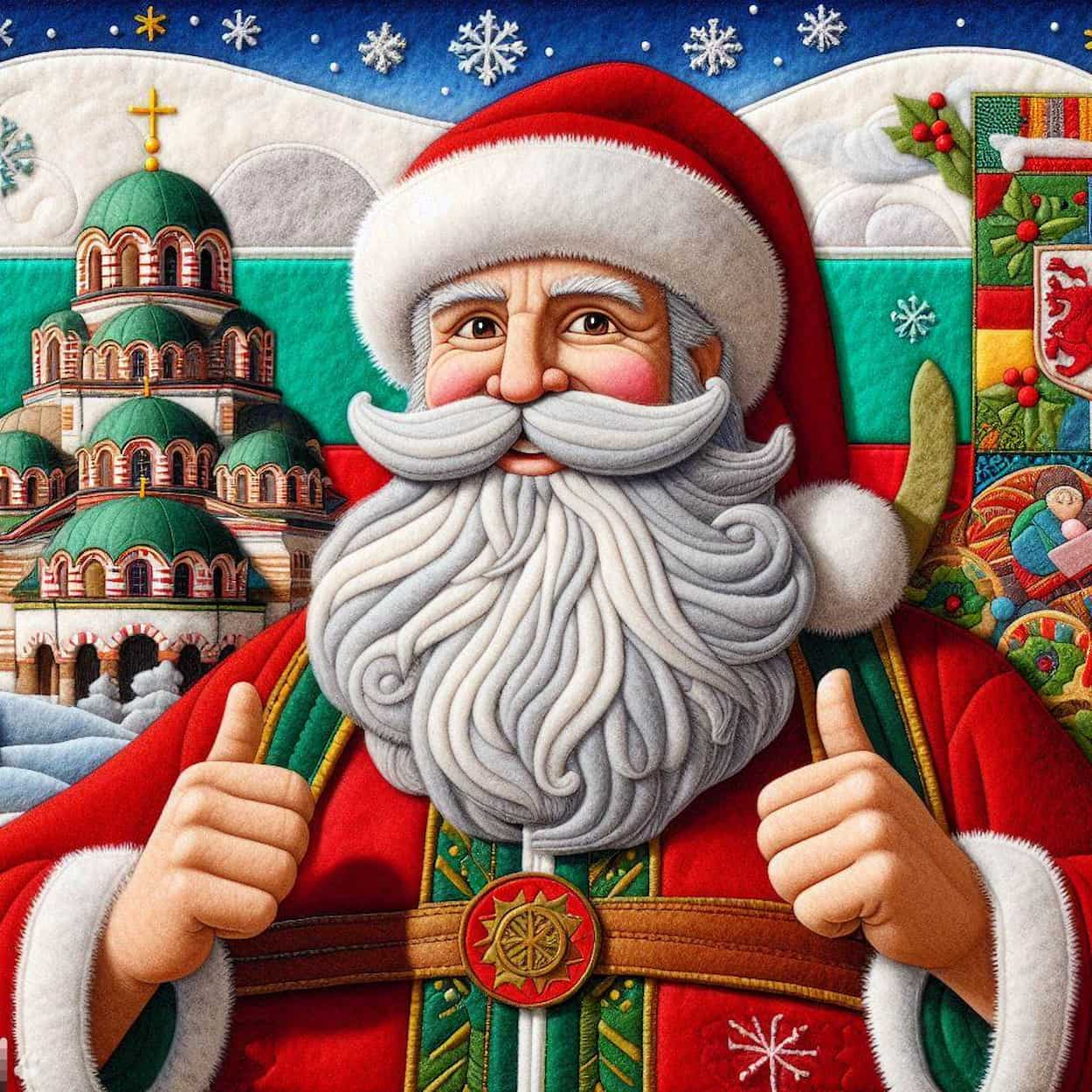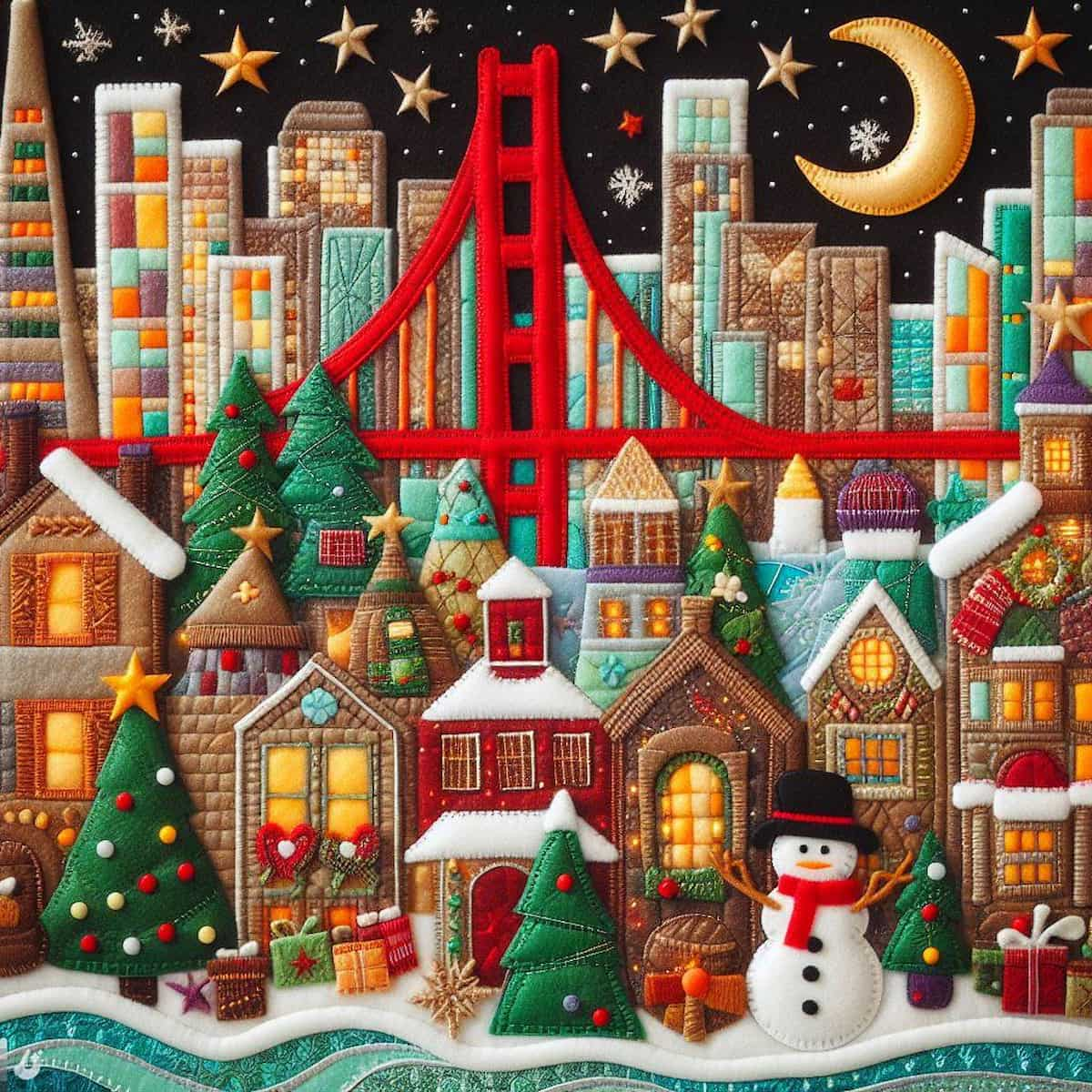Danes celebrate Christmas with a mix of new traditions and old favorites. Christmas Eve, December 24th, is the climax of the season, when families get together for a meal and gift exchange. The season starts with Advent in late November. Danish streets and residences are lit up with Christmas lights, while seasonal markets sell all sorts of goodies for the holidays. Danish Christmas dinners aren’t the same without the traditional rice pudding, Risalamande, and the dance that goes around the tree. Danish Santa Claus, known as “Julemanden,” also makes an appearance during the season. Generally speaking, Christmas in Denmark is about ‘hygge,’ or making everyone feel at home and spending quality time together.
Christmas Traditions in Denmark
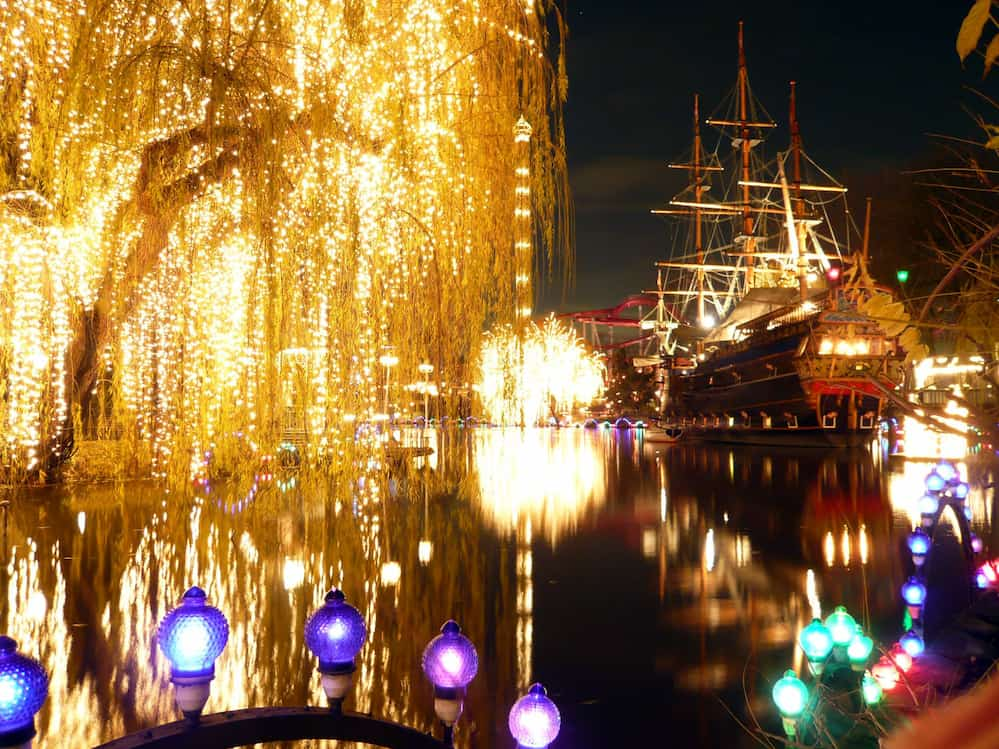
In Denmark, the Christmas season, in the common understanding of the term, spans from Little Christmas Eve on December 23 to the 2nd Christmas Day on December 26. Preceding Christmas is the Advent period, a serene preparatory time that commences four Sundays before Christmas. Liturgically, the Christmas season extends from the evening of the 24th until Epiphany on January 6 or until the Baptism of the Lord. With an emphasis on family, cuisine, and a celebratory attitude, these customs make Christmas in Denmark unforgettable.
- Advent: The four Sundays of Advent are celebrated by Danes as a prelude to Christmas. There are 24 little presents or activities to do or receive on each day of the advent calendar (also called a “Julekalender” or “Pakkekalender”) that count down to Christmas Eve.
- Julemandan: The ‘Julemanden,’ also known as the Christmas Man or Yule Man, is a figure that Danish children believe delivers gifts. He has a sleigh and reindeer and resembles Santa Claus.
- Christmas Lunch: Traditionally, Danes have karrysild, which is herring in curry, aebleflæsk, which is apple porridge with pork, and other meals on Christmas Day. After lunch, they generally go on a group nature walk.
- Julefrokost: Gatherings of coworkers, friends, and family for a series of lengthy lunches or dinners beginning around six weeks before Christmas are known as Julefrokost. The delectable cuisine and lively atmosphere at these gatherings are legendary.
- Lillejuleaften: On December 23rd, the Danish celebrate Little Christmas Eve, also known as Lillejuleaften, the day before Christmas Eve. A variety of celebratory events and decorations are used to honor this day.
- Decorations: Danish houses and streets are decorated with Christmas lights, while local bakeries provide traditional Christmas sweets such as klejner and pebernødder (ginger cookies).
Two Christmas Dates
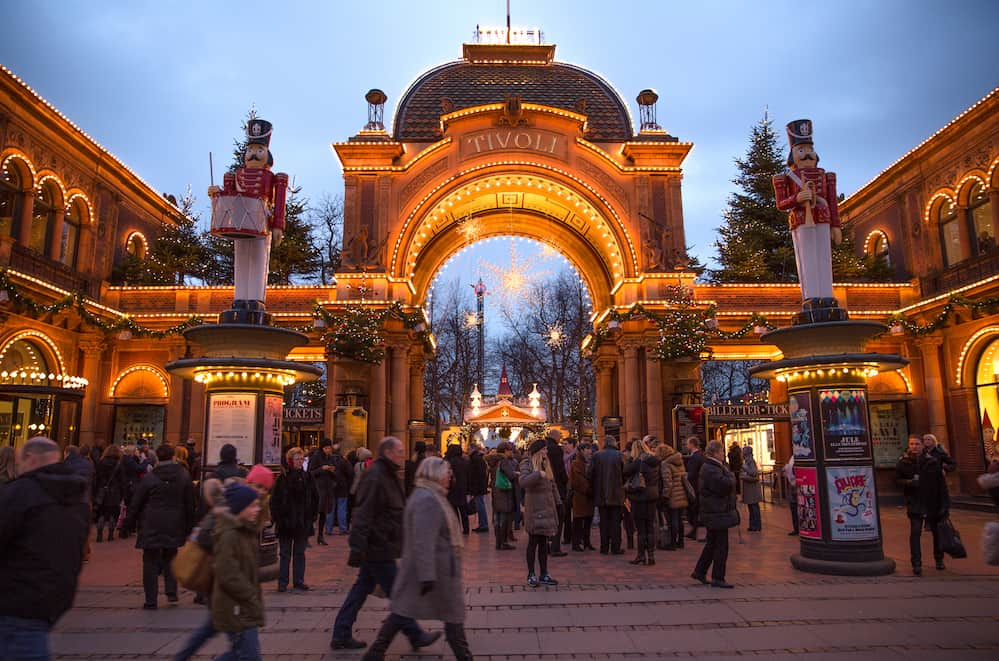
While Danes of the Catholic faith (3% of the population) observe Christmas Day on December 25, members of the Evangelical Lutheran Church (72% of the population) actually observe Christmas Eve on December 24. This is despite the fact that December 25 is honored worldwide as the birthday of Jesus which is debated.
Christmas Tree in Denmark
It was in the fifteenth century that German towns like Bern, Freiburg, and Strasbourg began publishing tales about Christmas trees, which is where the tradition began. Some researchers have speculated that the Christmas tree may have originated from holy trees in the pre-Christian era, such as the World Tree; however, this is debatable. A “paradise tree” was a theatrical prop in Germany long before the current Christmas tree came into popularity there. Shortly after its introduction in 1808 on Holsteinborg Estate in western Germany, the Christmas tree quickly became a cultural icon throughout the Western Hemisphere.
The Germans brought the Christmas tree to Denmark in the 1600s, but it wasn’t until the 1800s that it really took off in the country. The Star of Bethlehem is represented by the star atop the tree in Denmark. This Jewish tradition didn’t catch on until the 20th century. Stars were strung from the branches, and an angel, candle, or spire stood in place of the traditional treetop ornament.
Danish and Norwegian citizens are encouraged to display their national flags atop their Christmas trees as well. The fullness of Christmas is symbolized by braided hearts and peddled goods.
Santa Claus in Danish Christmas
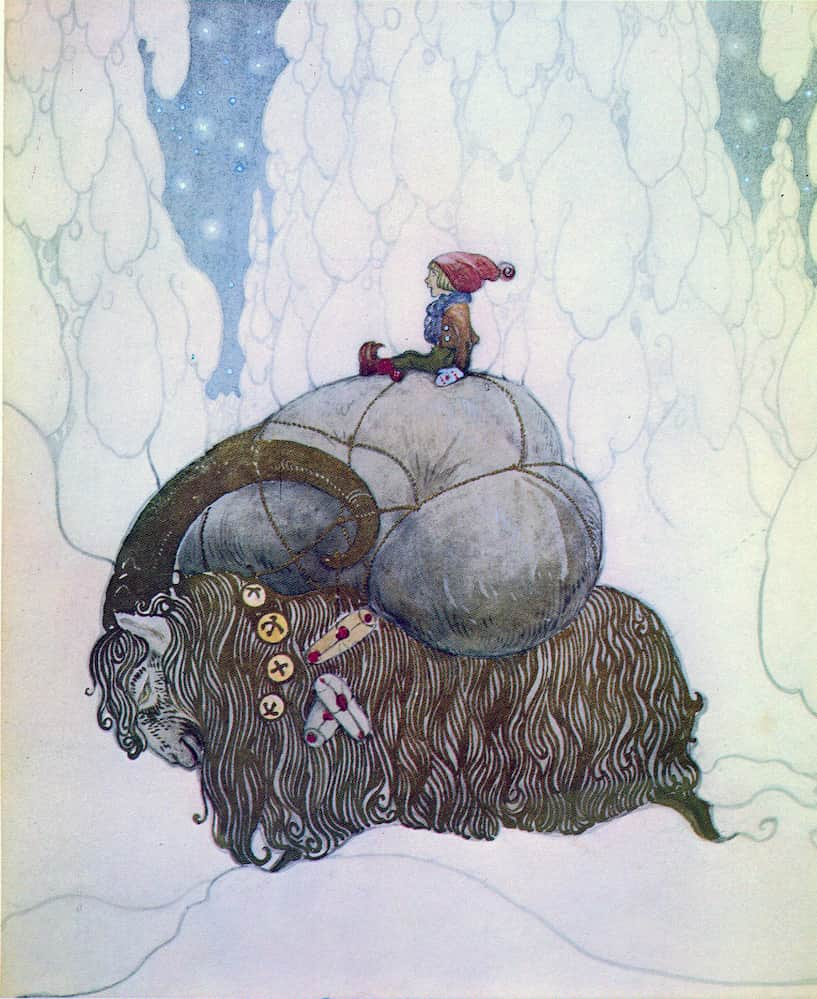
The belief in elves—house gods similar to the Roman lares or guardian deities in ancient Roman religion—is the source of the Danish Santa Claus or Julenissen myth, which dates back to the 1800s. The Danish concept of Julenissen has its origins in the belief in supernatural beings, such as giants or giantesses, which emerged during the Romantic era of the 1800s.
The Nordic countries never associated St. Nicholas with giving gifts since the practice originated in southern and central Europe. Nordic Christmas customs are based on his entwinement with many characters from local legend. The Yule Goat and Santa Claus are two such examples. The idea of Christmas presents (‘jólagjafir’) is mentioned in Norse literature as early as the end of the Viking Age, casting doubt on the common belief that the custom of distributing gifts at Christmas primarily originated with St. Nicholas.
Several of Santa Claus’s characteristics are said to have originated from Odin, the deity of midwinter and Christmas. All the hallmarks of the original Santa Claus, such as the hood, long white beard, and robe, are here. Also, the nighttime sleigh ride that Santa takes (which was initially on a horse but is now pulled by reindeer brought over from the United States) is a direct reflection of Odin’s sleipnir, the steed he used to soar over the sky.
Both of Odin’s names—Jólnir and Jauloherra—mean “Lord of Yule,” suggesting a link between the deity and the holiday season. One of Santa Claus’s earlier titles, Father Christmas, may have been derived from another of Odin’s names associated with Christmas, Jólfaðr.
The Course of Christmas in Denmark
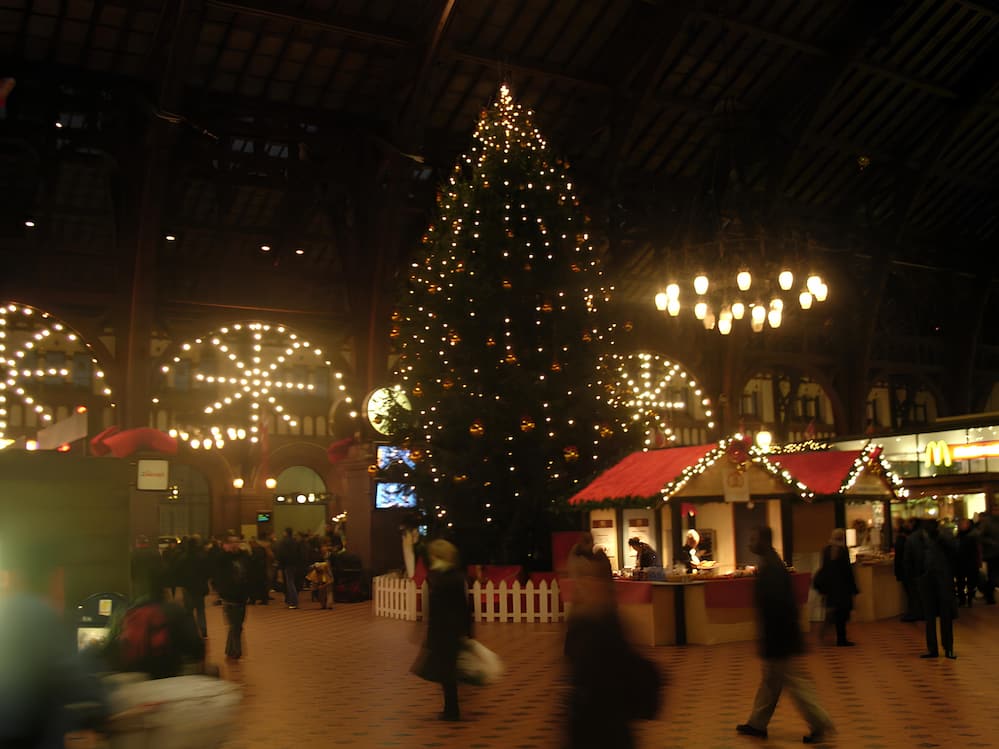
Some of the customs that are part of Christmas in Denmark include nativity scenes, mistletoe, the Christmas tree, exchanging gifts, telling the tale of Santa Claus, hanging gnomes that crawl about, and sending greeting cards that say “glædelig jul og godt nytår” or “Merry Christmas and Happy New Year.”
Christmas Month
Opening advent calendars, lighting calendar lights, watching TV advent calendars, going to Christmas parties, baking cookies, making candy, making braided hearts, peddlers, and other ornaments, and decorating with crawling gnomes are all things that happen in December in Denmark.
Little Christmas Eve (December 23)
This day encompasses adorning the Christmas tree, partaking in roast duck as a customary Christmas Eve meal, and preparing and consuming rice pudding, with any surplus utilized in the creation of risalamande for the Christmas Eve celebration. Another tradition involves singing at the door, and engaging in the playing of pack games adds to the array of customary practices.
Christmas Eve (December 24)
In Denmark, the celebration of Christmas Eve involves several traditions:
- 1. Enjoy a feast consisting of roast duck, turkey, goose, or roast pork, accompanied by cabbage dolmers, possibly combined with medister sausage and/or red cabbage/kale, and browned potatoes.
- 2. For dessert, indulge in either risalamande with hot cherry sauce or rice pudding with cinnamon. Rice pudding can be savored both as a starter and as a dessert. During this, present an almond gift to the fortunate discoverer of the almond.
- 3. Engage in a festive dance around an adorned Christmas tree while singing Christmas hymns and carols.
- 4. Distribute gifts that have been placed beneath the Christmas tree.
Christmas Day (25 December)
Many people throughout the globe celebrate Christmas on this same day, so, the Danes are not different.
Second Christmas Day (26 December)
Saint Stephen’s Day, which is also called the second Christmas Day, is a common day for “Christmas parties” in Denmark. Boxing Day is the English name for this day.
Third Christmas Day (27 December)
The Third Christmas Day, an ancient Danish holiday, was eliminated by the Holiday Reform of 1770. Prior to 1770, the celebration took place on December 27 and was initially observed as a Catholic saint’s day known as “The Feast of St. John the Evangelist.” This saint’s day commemorated the Apostle John, who, as per tradition, passed away on this particular day. In 1770, the Third Christmas Day was discontinued as a public holiday.
Fourth Christmas Day (28 December)
December 28 was commemorated in Norse times as “Children’s Day” or “Innocent Children’s Day” in remembrance of the infanticide that occurred in Bethlehem. The kids would eat well, play with one another, and tease the grownups on that particular day. This day is still celebrated by certain religious families in Denmark.
Christmas Tree Party
On the days before Christmas or during the week spanning Christmas and New Year’s, several places of employment, community centers, local and sports clubs, etc. host Christmas tree celebrations. On a regular basis, there are Santa Claus visits, gift bag distribution, Christmas tree dancing, and a variety of singing games in Denmark.
Places to Visit in Denmark at Christmas
Among the most delightful destinations in Denmark during the holiday season are:
- Copenhagen: Visit the capital city of Denmark, Copenhagen, to see the Tivoli Gardens in the winter, Christmas markets, and historic mansions. Festive decorations, markets, and festivities make the city a place to spend Christmas.
- Aarhus: The open-air museum Den Gamle By in Aarhus is lovely around Christmastime, and the city is known for its eateries.
- Aalborg: The Christmas markets and ambiance of Aalborg make it a destination during the holiday season.
- Odense: Visit Odense, the birthplace of Hans Christian Andersen, to partake in its Christmas markets and see its rooted customs.
- Ribe: Another city where Christmas tradition is alive and well is Ribe which surprisingly only has a population of 8,400.
The Danish Christmas Foods
“Christmas lunch” is called Julefrokost in Denmark (more specifically, “Christmas meal that lasts an entire day.”) Many tasty dishes are staples of the Danish Christmas feast and a big part of the holiday spirit. A few of the most beloved Danish holiday delicacies are:
- Flaeskesteg: A traditional highlight of the Danish Christmas feast is flaeskesteg, which is a roast pig with crispy crackling.
- Andesteg: Roast duck is another typical Christmas main course and it’s named andesteg.
- Risengrød: It is a traditional Swedish and Danish dessert or holiday meal item that is basically a heated rice pudding.
- Æbleskiver: Danish Christmas treats sometimes include Æbleskiver, which are round pancakes topped with powdered sugar.
- Klejner: They are a classic Danish Christmas delicacy made of fried dough twists.
- Pebernødder: They are little spiced biscuits that are beloved throughout Danish Christmas.
- Gløgg: It is a classic Danish holiday drink, a warm spiced wine that is accompanied with raisins and almonds.
- Brunede Kartofler or Caramelized Potatoes: They are a traditional Christmas side dish that combines caramelized sugar with potatoes.
- Pickled Red Cabbage: It is a common accompaniment to Christmas dinners in Denmark.
- Risalamande: On Christmas Eve, many people eat risalamande, a dessert of rice pudding with cherry sauce.
Traditional Christmas Decorations
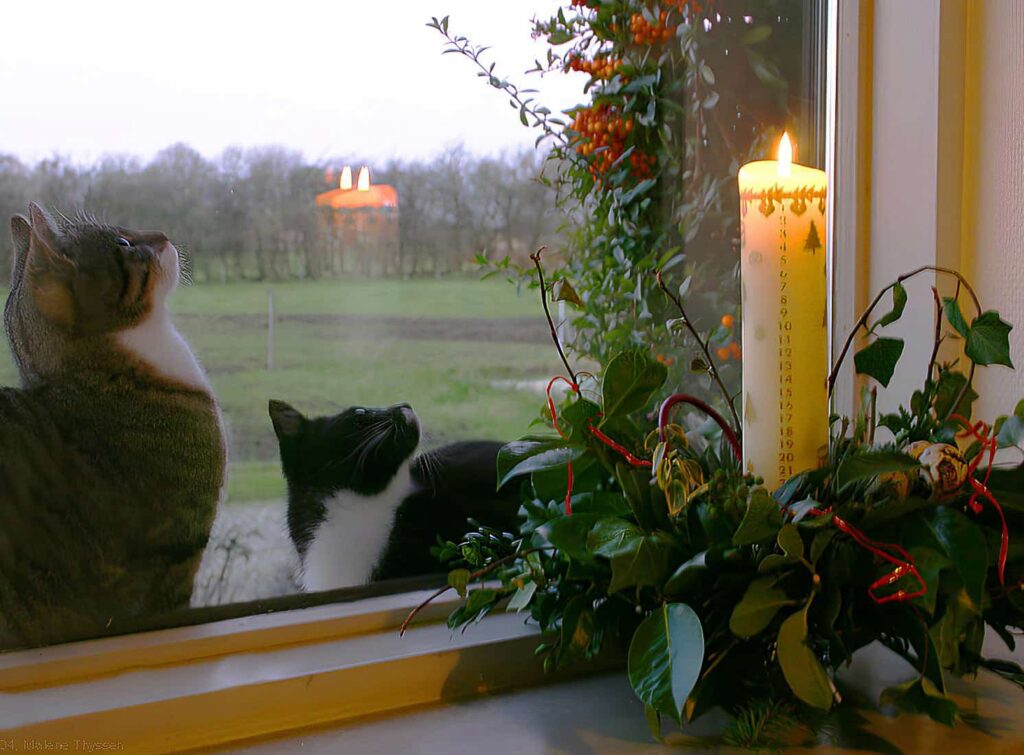
Kalenderlys
The Danes like to keep things simple this holiday season by using one of their favorite household items: candles or kalenderlys. It is a massive candle with the numbers 1–24 displayed on it. The Danes move the candle to the next location daily.
Julehjerter and Julestjerner
The Danes enjoy making the traditional Danish Christmas decorations, Julehjerter (Christmas Hearts) and Julestjerner (Christmas Stars). Their construction involves folding paper, and they are designed to be strung up.
Hyacinths, Amaryllis, and Advent Wreath
Bulb plants such as hyacinths and amaryllis are also common Danish decorations for homes and parties. Additionally, the majority of households also have an Advent wreath. Each of the four Sundays before Christmas Eve is marked by the lighting of one of the four candles that make up this tradition.
Julefrokost, the Scandinavian Christmas Feast
The good news is that it’s usually simpler than you’d imagine to set the table for Christmas when you’re literally going to be eating all day, like Julefrokost. Beautiful candle-focused centerpieces, along with table runners and delicate linens, are commonplace on Danish Christmas tables, also known as Julefrokost.


